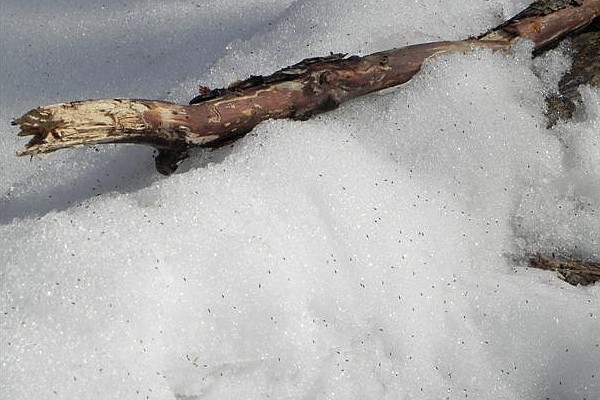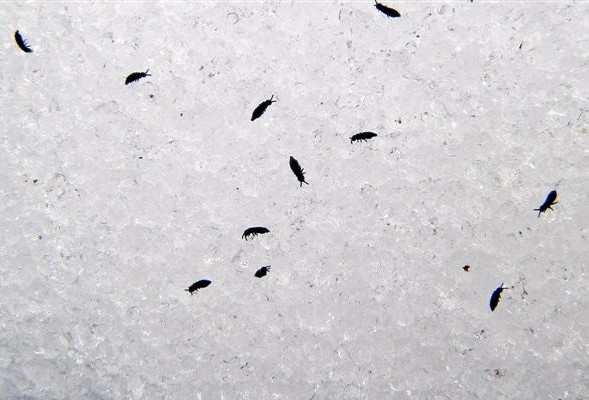
Have you ever seen pepper on snow? Did the pepper jump when you approached?
Last weekend Marianne Atkinson found black sprinkles on the snow near her home in Clearfield County, PA.
The “pepper” is hard to see in her first photo. Here’s a closeup.

These are snow fleas (Hypogastrura nivicola), a springtail species that earned its name because it appears on top of snow on warm winter days and, like all springtails, it jumps like a flea to avoid danger.
Springtails as a group are very interesting creatures:
- They are very small, less than 0.24 inches long. To see them well you have to magnify them.
- They have a spring-loaded furcula (like a tail) that they clasp under their bodies. When they let go the “tail” whaps the ground and propels them into the air.
- Springtails are technically hexapods, not insects.
- Most springtails live in leaf litter and topsoil where they eat decomposing plants and animals.
- They are very gregarious.
- They are highly sensitive to drought. Because they breathe through their cuticle (hard skin) they can’t afford to dry out.
- Springtails are a sign of good soil because they are very sensitive to herbicides, pesticides and pollution. Folsomia candida are used in the lab for soil toxicology tests because they avoid — or die of — chemicals at very low levels.
- There can be 100,000 springtails in one cubic meter of soil, making them one of the most abundant macroscopic animals on earth.
Snow fleas themselves are extra special. They are active in winter because they have a protein in their bodies that works like anti-freeze.
Sometimes it’s the little things that are the most fascinating.
(photos by Marianne Atkinson)
Cute little critters!